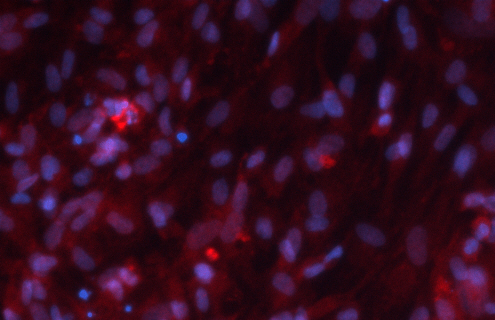
Induced pluripotent stem cells (iPSCs) provide a powerful starting material to model human disease in relevant cell types. iPSCs may be generated from patients of any genetic background and possess the capacity to differentiate into almost any desired terminal cell type.
Although additional investigation is needed, researchers are beginning to focus on the potential utility of iPSCs as a tool for drug development, modeling of disease, and transplantation medicine.
Using ATCC’s complete feeder- and xeno-free culture systems, researchers can generate standardized, quality controlled, and highly characterized human iPSCs lines. ATCC’s iPSCs are derived by episomal, retroviral, or Sendai viral reprogramming. After gaining pluripotent status, the iPSCs may then be induced to differentiate into many cell types. These cells are valuable materials in the study of differentiation, tissue repair, disease pathogenesis, and drug discovery and development.
ATCC is a licensee of iPS Academia Japan’s induced pluripotent stem (iPS) cell patent portfolio and is able to bring complete cell culturing solutions for iPSCs to the research community.
ATCC iPSCs are tested for pluripotency, karyotype, growth potential, and sample purity. These authenticated materials are backed by meticulous quality control procedures, making them ideal as reference standards for physiologically relevant in vitro research.
Directed differentiation of gastrointestinal epithelial organoids using ATCC CellMatrix Basement Membrane from multiple human iPSC lines
Three human iPSC lines were tested for their ability to generate gastrointestinal organoids using defined culture media in a 2D/3D culture system. After 4 weeks in culture organoids expressed tissue-relevant markers indicating the presence of multiple differentiated cell types including secretory goblet cells, absorptive enterocytes, and paneth cells
Read the application noteHuman iPSCs for research

Advanced Models of Parkinson’s Disease
Optimized cell lines are essential for modeling neurodegenerative diseases such as Parkinson’s disease, screening novel therapeutics for preclinical studies, and testing the neurotoxicity of environmental compounds. Neural progenitor cells (NPCs) derived from induced pluripotent stem cells (iPSCs) are excellent in vitro models as they can be induced to differentiate down all three neural lineages. We describe how ATCC NPCs can be differentiated into three neural fates and used in toxicological studies, focusing on the performance of the Parkinson’s disease-derived NPCs.
Download Presentation
Culturing Human iPSCs
While stem cells hold great promise for biomedical research, the in vitro propagation and maintenance of these cells in an undifferentiated state is essential. Stem cell culture remains a challenge, even with the knowledge that scientists have gained over the past decade. Different types of stem cells often require different culture conditions. Learn the tried and true culture techniques to maintain your cells in an undifferentiated state.
Get the iPSC Guide